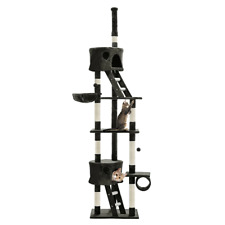Potential Problems When Adopting a Rescue Dog

This was possibly the most difficult piece for me to write to date. I realize this will anger people. I expect hate mail. I am not writing this to make friends. I am writing it to better educate potential dog owners. I wish I did not have to write this. I wish I could say every adopted dog has been perfectly chosen and placed. I wish…
I have a background that includes working in shelters, volunteering in different capacities with rescue groups and offering free and reduced costs services to foster and newly adopted dogs over the past two-plus decades. I have adopted dogs, cats and other species from public shelters and private rescues. I commend people who have dedicated their lives to rescue work. I have met some of the best rescue people out there! Sadly, there are rescuers who need to rethink what they are doing and how they are doing it. I have met these as well. There are many articles regarding choosing and working with a breeder, but very few on choosing and working with a rescue. As a trainer and behavioral consultant, I have worked with hundreds of rescue dogs including several brought here after natural disasters (think Hurricane Katrina). Rescue pets always have a special place in my heart. However, individual placements have been a thorn in my side. The purpose of this is not to discourage people from adopting animals. Rather, I want people to learn how to make the best choice possible for their home without having to put "blind faith" in others. This could be the difference between finding the dog of your dreams or the dog of your nightmares.
Over the years, I have seen some excellent rescue placements resulting in superb matches. These dogs have blossomed into wonderful companions. Some went on to become great competition dogs and therapy animals. I have seen and worked with more than my fair share of poorly chosen or placed dogs. The bad placements have resulted in, at best, serious work for the owners. In the worst cases, euthanasia was determined the only safe, sane and even humane recourse. Poor placements have a variety of reasons for why they occur. In some bad placements, the adopters had not thought things through: failed to research the best type of dog for them. Many went to a public shelter/pound and adopted the first dog they saw. In other cases, the rescues lied, downplayed or did not divulge significant information regarding the desired dog. In all cases of bad placements, the dogs suffered. This is why I decided to take on such a difficult and heart wrenching topic. I realize I will anger many people with this. However, if I can get one person to step back, re-evaluate things, research and carefully choose their canine companion, if I can keep that one person from an impulse adoption of a dog not suited and prevent a dog from ending up in a bad situation, then I have justified myself.
Preparation And Research
Long before you enter a shelter or contact a rescue, do your research and determine what type of dog closest fits your needs. Do not rely on the rescue to do this for you! I have had many clients adopt Labrador Retrievers based only the recommendation of rescues. Not one client had any real idea how high energy and strong Labs can be. Few of these families were able to meet the needs of the average Lab. Some were not even suited for a dog at that point. I have had multiple clients adopt Border Collie crosses. They saw a "highly trainable" type of dog and jumped but could not properly meet the needs of these dogs. Failure to know what you should be considering will result in a bad placement depending on the rescue.
No matter what a friend, relative, neighbor, rescue or the media wants you to think, there is no one breed or cross that is perfect for every situation. Breeds are often misrepresented in the media or TV shows. You have to determine if that dog everyone tells you to get is truly the best match for you. There is not much worse than to see a dog with immense potential with owners who cannot or will not give the dog what is needed to be a good companion. If you fail to research and end up with more than you can handle, the only person you have to blame is yourself. The one who will suffer the most is the dog. Bad choices can result in injury to humans and death for the dog.
Not all rescues screen owners well. Not all rescues can deny adopting out a dog to a less than suited home. I have had some clients go to public pounds because they knew that a pound could not deny them a dog. Private rescues and breeders had turned them down for legitimate reasons. These owners went to the public pound/shelter because they knew they could get a dog. This is the height of irresponsibility. None of these families were able to meet the needs of pretty much ANY dog let alone the ones they walked out with.
Some rescues are so happy to get a dog out that they will overlook a poorly suited home just to move the animal. Other rescues see how many animals they place a year as a badge of honor, even if they fail to make wise placements. Some rescues will even try to push dogs on families in order to get the dog placed even if the adopters have questioned the suitability of the dog. If you know a big hairy dog with a lot of energy is the last dog you want, do not permit a rescue to push that dog on you! You must make the best choice for you based on solid research prior to contacting a rescue. Once you have made your determinations, it is time to look at rescues.
Different Types of Rescues
There are different kinds of rescues. For the purpose of this, I am going to break down to two main areas: Kennel Types (public or private shelters) and Foster Home Types (using foster homes with no kennel facilities), some rescues may use a combination of kennels and foster homes. There are varying degrees within each when it comes to how and what dogs they place. When considering a rescue dog, research the pros and cons of each type of rescue. For example: In kennel situations, it may not be as easy for the staff to evaluate the dogs, if they do at all. There is only so much that can be done in a room with controlled situations. Say under controlled situations, the rescue feels a dog exhibits moderate animal aggression. How will the dog behave in the "real world?" The dog could escalate to severe in a situation where the owner cannot control how an approaching dog is managed. Foster homes have the dogs in a real world environment, therefore, should be able to identify and work with issues before placing a dog. Alternatively, in a fostering home, the dog may be comfortable and not show undesired behaviors. Dogs behave differently in their comfort zones and when in stress zones. Not all foster families will properly work through behavioral issues. How the foster family works with the dog can affect future behavior. It is possible the foster family has done things that give the appearance of improvement behaviorally. However, in reality, the foster family was working the dog in a way that increased anxiety and the behaviors will return with a sudden explosion after adopting. Now let us look a little closer at rescues.
Kennel-Type Rescues
Shelters vary from outstanding to minimal care warehouses. Kennel types may be public or private. Some are able to give dogs every chance before considering euthanasia while others cannot afford that luxury. Some will not euthanize, but may be very specific about what dogs they accept or turn away. Some may even turn away adoptable dogs so they can take on only hard cases for which adoption may not be viable/safe option. It is possible to find a wonderful dog at a kennel type shelter if you use common sense. Some of the best dogs I have ever worked with came from kennel type shelters: both public and private.
A public shelter often takes in every dog. Sometimes, owner-surrender dogs go on the adoption floor based solely on what the surrendering party claims. Private shelters may have the luxury of holding dogs for more time, especially if they do not euthanize when they are at capacity. Sadly, it is not uncommon for surrendering owners to downplay or lie about behavioral issues because they want to give their dog every chance at getting a home. This is understandable, though it means there is a chance a significant concern could be passed on to an unsuspecting person. Though, not all dogs given up have real behavioral issues. Many are just from owners who got a dog on impulse and cannot keep the poor thing. With a little work, the dog can be great! As I edit this, I ran into a woman who wanted to give up her dog because he was shy and she was renovating her townhouse. She felt owning a dog with renovations happening to her home was too much. The dog had to go.
A former client of mine eventually admitted to going through close to half a dozen dogs because she wanted very specific behaviors. What she was describing behaviorally was a Persian cat. She had gone through at least four dogs prior to being sent to me. I learned about these dogs partway into our sessions. Of the two of her dogs (she had two when she was referred to me), she signed over for me to put into a breed rescue; the other became the victim of a tragedy at the hands of a cleaning person’s child several months after we completed work. None of her dogs had real behavioral issues, though she did not like barking or having to exercise dogs. Her dogs were actually wonderful dogs and a joy to work with. Some dogs are given up for other reasons (move, new child, allergies, etc.), or at least this is what the surrendering owner claims. I have known people who were considering giving up dogs with severe behavioral issues and who were willing to lie on surrender forms.
While in a kennel, not all dogs will exhibit the behaviors for which they were surrendered even if they have been there for a few days. It is not the shelter’s fault if an owner lies on the forms and the dog does not exhibit the behaviors for which they were given up. This should not stop you from considering a public shelter. Instead, do not rely solely on the reason for surrender when choosing a dog. Gather as much information as you can about the dog before you say "yes."
Before I continue, I have to say: please, do not refuse to go to a shelter because the staff may have to euthanize animals. Shelters do not do this because they are heartless. It is a sad reality of irresponsible owners. What happens to the dogs a "no-kill" rescue turns away due to lack of space or because the dogs are too big or too old or even the wrong type? Some of them end up being abandoned, even on the shelter property. This happened several times during the years I worked at a "no-kill" shelter when we refused to take dogs when the shelter was at capacity or because the intake coordinator felt the dog was not a good candidate for fast adoption. Some of the dogs raced into the fields behind the shelter. Another died on the busy street in front of the shelter (he died in my arms after being hit by a car). The luckier ones went to the "kill shelter" up the street where, if not placed, at least they had a humane euthanasia. However, it is also your responsibility not to jump at a dog because you know he faces euthanasia. I know it hurts, and I have been there myself. You need to make the best choice in all fairness to your family and the dog you wish to share your lives with.
Many of the worst matches I have worked with came from people who felt bad because a dog was nearing his end at the shelter but chose to ignore significant signs the match would not work. There may be a reason the dog has not placed. Maybe the dog was surrendered with a behavior that most adopters are not able to safely manage let alone successfully work through. It is possible the dog has been at the shelter so long he has developed undesired issues that turn away many adopters. Long term kenneling at a shelter can be very psychologically stressing. It is possible the dog can be brought around with a little work. It is also possible that so much damage has been done prior to surrender and at the shelter that the dog is too far gone for the average home to sanely consider. Some shelters would rather euthanize a dog that has no hopes of placement so they can help other highly adoptable dogs for one that has no reasonable chance at a good placement. If the unadoptable dog is kept, they may have to turn away dozens of dogs if not more during the life of the unadoptable dog. Or else, someone may place the unadoptable dog and the result could be tragic. Now back to looking at dogs in shelters.
Is that dog appearing calm in his run really calm and sedate? It is possible that the dog is so terrified he is frozen with fear. That dog barking maniacally at the gate may not be aggressive. He may be frustrated or overly excited. Runs can be a difficult place in which to see the best, or worst, in a dog. When you see a dog you are interested in, ask if a staff member can take the dog out of the run and to an area away from the other dogs. See how the dog now reacts. Look for body language cues that could indicate what may be going on: is the tail set high or is it tucked way under the bottom or is it wagging in a happily? Are the dog’s ears pinned back tight against the head, pitched way forward or held in a relaxed manner? It the dog on his toes, hackles raised or is he lip licking and avoiding gazes? Does he appear hyper-vigilant, terrified or relaxed? Is his whole body tense or is he easy going? There are many subtle cues to look at. If you are in doubt of your abilities to read a dog, ask a local trainer to come with you. You may have to pay a fee for the trainer’s time, but it may be the difference between a life of fun or one of stress. Bear in mind, this is still no guarantee of a great dog choice, but it is important to read that dog the best you can. (For resources on basic understanding of dog body language, please see the "points" at the end of this article).
There is a liability issue with knowingly placing dogs with dangerous behaviors, some shelters are very cautious about this while others are not. If owners were more responsible and did their jobs, fewer dogs would end up unwanted. Some rescues will not euthanize a dog at all, regardless of the reason for surrender and what they witness. This has lead to a more than a few truly dangerous dogs being placed. Shelters are put in a bad situation when it comes to what they take in, should they euthanize and what is a good candidate for adoption. Not all shelters will use common sense. Just because we want every unwanted dog to have a home, there may not be a home suited for every dog. Some rescues forget this. Again, you must use common sense. Alternatively, do not pass up a dog due only to age. Some of the best matches I have worked with were senior dogs given a second chance.
Once you have found a dog you are interested in, ask to review all forms pertaining to the dog, including any evaluations. How do the evaluations compare with the surrender information and what the adoption counselor says? As a potential adopter, remember behavioral evaluations only look at the behavior at that given time on that given day. I have evaluated dogs whose owners claimed significant behavioral issues and we were unable to get the behaviors to reproduce. It happens. Therefore, subsequent evaluations or asking the owner to video the behaviors is a help. Has the shelter done more than one evaluation and how do the results compare? Formal evaluations are often done in more controlled environments than an owner will face "real world." If a dog is giving concerning behaviors in a controlled evaluation, there is a chance the behaviors will be worse when faced with a similar situation in an uncontrolled environment. What the dog has been exposed to prior to the evaluation could skew the readings. Was an "Assess-a-Hand" (fake hand on a stick) used? A dog who has been hit with a stick in the past may not evaluate well when he sees that stick with a funny smelling fake hand coming at him. A doll will not elicit the same response from a dog as a real child. Evaluations are designed to mimic what a dog may experience but are not 100% accurate for many reasons.
Some evaluators are overly aggressive, push a dog to the breaking point. I have seen videos of dogs inhumanely poked and prodded with an Assess-a-Hand for many minutes before reacting with a quick growl, a snap and then walking away, and the evaluator failed the dogs. Dogs may have gender-specific aggressions or fears. How does the dog respond to both genders? Overall evaluations are only as good as the person doing the evaluating. I am not saying you should discount an evaluation. The evaluation can provide insight when combined with information given at time of surrender. Remember, you have to hope the surrendering owner was honest on the forms. If the dog was as a stray or confiscation, evaluations and observation are the only references you have.
If the rescue refuses for any reason to allow you to see the documents, do not adopt the dog. If you are told there is personal information on some forms so you cannot see them, ask the staff to cover the personal info and make a copy for you. Again, you deserve to see the forms. If you are stonewalled, ask to speak to a supervisor and explain why you will not be adopting a dog from them. There is a chance the adoption counselor is not following protocol in order to get a dog moved. There is a chance you may get protocols changed. In the end, not being able to review forms prior to adopting is denying you vital information so you can make the most educated decision possible.
Do not forget to ask about medical issues. As with behavioral issues, shelters may be at the mercy of what the surrendering owner says. It is possible for a dog with a medical condition to be adopted and the shelter unaware. Some shelters may have dogs fully vetted and try to check for underlying conditions. Do not blame the shelter if something was left off by the surrendering owner. Not all medical issues will be readily apparent. If the shelter is aware of an issue, ask for information on it. Many conditions are treatable or manageable. Ask if the dog was spayed (it is easy to tell if a male has been neutered). Again, shelters may have to go by what the surrendering owner claims. If there is a veterinarian listed on surrender forms, ask if the shelter can call to verify surgery. If not and you choose to adopt the dog, ask your vet to help you determine if she was spayed or not. There have been cases of pregnant dogs being surrendered, shelters told the dog was spayed and the adopter being presented with a litter.
After you adopt the dog, no matter what the shelter says, have the dog examined by your own veterinarian as soon as possible after adoption and enroll in a good training program. After making the most educated decision possible regarding your new dog, a good veterinarian and good trainer will be your best allies.
Please, do not let what you have read deter you from looking at a shelter. Just go in with your eyes open and your homework done. You could end up finding the dog of your dreams in that scruffy little thing. Many of my clients have!
Foster Home-Type Rescues
Foster home rescues attracted many of my clients. They decided to go with rescues that used exclusively foster homes assuming the dogs would get some form of training, socializing and good evaluations before adoption. Many rescues do a good job of all these things, but some do far more harm than good.
I was at an adoption fair observing a rescue with whom I am very familiar. The director frequently called me or referred adopters to me regarding behavioral issues with foster and newly adopted dogs, especially crate issues. I was curious so I stared going to their adoption fairs. I watched several volunteers try to quiet dogs expressing stress, by spraying them in the face with water. Allegedly they had been instructed to do this because it would work! Yes, the dogs stopped barking for a few moments but started up again. The water spray increased the stress levels of the dogs. The helpers at the fair escalated to yelling at the dogs and even banging the crate tops. The crates were becoming places of behavioral torture. I witnessed this on various occasions. It is stressing enough for a dog to be at an adoption fair without the volunteers making it worse. How would the dogs behave the next adoption fair? What undesired behaviors and fears were being passed on to unsuspecting adopters?
This rescue was also one pushing people into unsuitable matches including an out of control pup who would mature to be close to one hundred pounds with a frail, elderly lady. The director called me to tell me to expect a call from the adopter to make it work. I wish I could say this was an exception to rescues. Over the years, I have worked with quite a few dogs placed in homes that were not suitable for the individual dog. With many homes it was clear, based on evaluations and applicant information, that the dogs were poor matches for a variety of reasons.
As with working with a kennel style rescue, you need to observe the dog’s body language as well as how the fostering family interacts with the dog. Look and listen for red flags. For example, the dog is supposedly great with children, but the foster home has no children. You notice the dog backing away, tail tucked and ears pinned, from your well-behaved child. The foster home tells you the dog is just shy. Should you adopt the dog? I would not. Do you have cats? Has the dog ever been exposed to cats and what was the reaction? If the foster home does not have a cat, ask if there is a way you can see the dog with a cat. Ask the fosterer to take the dog for a walk with you. How does the dog behave and what excuses does the fostering family make? Ask what work has been or is being done with the dog. Ask it to be demonstrated and how do you feel? Is the dog showing stress at other dogs or pedestrians (barking and lunging) being punished for it or is the fosterer redirecting the dog and trying to teach the dog to relax? Does the fostering family state the dog needs a prong collar or head halter in order to be walked? You will learn a lot through observation.
Ask about medical issues. If the dog has been seen by a vet, ask if you can contact the vet for more information. You need to know if what the foster giver is doing is in agreement with the vet. If the dog has not been seen, ask why. Ask if they know for certain that the dog has been spayed. As with shelters rescues, I have had multiple clients told a female had been spayed only to have her come into season, or even present with a litter of puppies a few weeks later! If there is a veterinarian listed on the surrendering papers, ask the rescue to call and verify if the dog was spayed. If the dog has not been spayed by the rescue and there is no way to verify that the surgery has been done, after adoption, ask a veterinarian to help you determine if the surgery was done or not.
As with a kennel style rescue, ask to see ALL the paperwork and evaluations on the dog. Do not accept "Oh the director keeps all those and you will get them later after you adopt." You deserve to see the papers before making your choice. Ask to keep a copy of your adoption interview form. If it is done online, print a copy for yourself before hitting the send button. Compare what you said with what the dog’s file says. You state clearly you have other pets or are considering starting a family and may discover the person handling the adoption tries to hand you a dog that has not been exposed to other animals, children or not good with either. Why is the person trying to adopt this dog to you? Rescues that are not trying to make the best matches are rescues to avoid.
As with shelters, do not let this deter you from considering adopting from a rescue that uses foster homes. Do your homework and go in as educated as possible while you make your choice. You may adopt a superb dog that will bring you years of enjoyment.
Is This Dog Really A Rescue?
Another issue I must raise, as this seems to be becoming a bit more common, is that the rescue is not truly a rescue. Instead, they are doing only "courtesy listings" for owners who have dogs they must re-home. There are no foster homes, no evaluations, nothing by the "rescue." Ironically, some of these "rescues" will do a home check and ask for an adoption form to be filled out. Talk to the rescue coordinator and ask why there are so many "courtesy listings" for private owners. Ask if anyone from the club or group visits the dogs for evaluations. If not, this is a red flag. The adopter is at the mercy of the honesty of the current owner. Sadly, remember, the owner wants to get rid of the dog and this may lead to misrepresentations of said animal. Do you think the owner will honestly tell you if the dog is a risk?
As I edit this, I completed work with a dog from a "courtesy listing" rescue. The rescue was part of a regional breed club. Adopters go through a home check and fill out an adoption form. However, there is no provision for a dog to be returned to the rescue as there is no true rescue. The "foster homes" are the surrendering homes and the dogs, at least at the time of writing, are not evaluated at all. This client adopted a dog with major behavioral issues that were not apparent at the surrendering home. Had the dog gone to a foster home, the behaviors would have come out. The dog exhibited the behaviors the moment he entered the adopting home.
The adopter was never told this was how the rescue ran. This vital information was hidden way at the bottom of the rescue page on the club’s site after the available dogs list and it was not made clear during her home check. I had a tough time finding this information when I visited the club’s site and I was looking for it! This dog may never fully rehabilitate. The owner is highly dedicated and knowledgeable in the breed and is realistic. She is comfortable with the exercises outlined and will update me on her progress with the dog. Already, she has brought this dog further than I had hoped. She is also trying to get the "rescue" to be more forthcoming with their information and have the dogs evaluated. Had this dog gone into a different home, things could be far worse.
Next, is the rescue truly a non-profit rescue? There are people claiming to be rescues that are actually using this guise as a way to sell animals and support themselves. The animals receive minimal care with the majority of the money used to line the pockets of the "rescuer." Does the person have many animals and not one assisting foster home? In reality, the person may be reselling the animals. Look to see if the rescue has any tax-exempt status. There are various forms of this with one of the more common being the 501(c) 3. Listen for key words such as "We are working on it." This may be true or they may not be. If you do not see anything on a website or in writing on an adoption contract, ask and then get the tax-exempt number if he answer is "Yes." If the rescue is new, it can take time to obtain non-profit status. Ask if paperwork has been filed. If the rescue is smart, they will have copies of what was filed with the IRS and when.
No one Wants Poor Molly!
A concern with all rescues, kennel or foster type, are the "guilt trip" placements. These ones really worry me. "Molly has been here for so long and no one wants her." Why does no one want Molly? There may be a legitimate reason such as Molly has more issues than the average home should sanely be expected to handle. It is your duty to ask or try to determine why the dog has been there for so long. Think hard, is this something with which you can sanely live and work through. Talk to trainers regarding the behaviors. Ask if the rescue will allow you to have a trainer look at the dog if you are very serious about the placement.
Sometimes, a dog being in a rescue for a long time is a case of the dog being a healthy, well-behaved senior and people do not want to deal with the inevitable within the next few years. Senior dogs have a lot to offer! I had a client who adopted a ten year old dog who had never been out of his backyard. He was dumped when he got too old. This wonderful couple gave him a second chance. Well this dog was a fast learner and one of my all-time favorite clients. The last time I ran into the owner, the dog was still with the family and an absolute joy!
Maybe the dog has a treatable medical issue or needs daily medication. Not all adopters are willing to pay for treatment, even if the cost is low. If this is something you feel comfortable managing, affording and the dog is a good candidate otherwise, maybe this is the dog for you.
Sometimes, the rescue has a dog that should not be placed. Some dogs are just too dangerous to sanely and safely place. Some rescues assume every dog must find a home and ignore safety. Sadly, this leads to some bad situations.
Along with guilt trip placements are the downplaying of your concerns. Does the rescue appear to do this? Are you told just go buy "X" (often a head halter or prong collar) and the dog will be fine? Why can the dog not be managed without a device that helps prevent certain behaviors and may worsen others? If you see the potential for severe issues based on documentation with observation and the rescue does not seen to have the same concerns, why? I have observed rescue groups tell a potential owner that the dog was just a little stressed when the dog’s body language was screaming something much different. This was not a little stress. This was a dog in a total panic. If your concerns are not taken seriously or you do not feel they are, should you go through with the adoption?
Adoption Checklist
Regardless of the kind of rescue you decide to work with, it is your duty to remember the following:
It is your job to research what the best canine match would be for you. Do not go by what you see in the media or what an adoption counselor states. Talk to trainers, check out breed specific rescue and breed club websites, get your hands on books, etc. Knowing what the breed or assumed breeds in the cross were developed for will help you decide what type of dog you should consider.
- Check out the rescue. Visit and talk to people before you are ready to fill out the paperwork. What is your first impression of the people you may be working with?
- Learn basic dog body language. Talk to trainers and ask for some red flags to consider. Turid Rugaas, Dr Ian Dunbar, Dr Karen Overall, Temple Grandin and Jean Donaldson all have excellent pieces you can find online regarding dog body language, as well as books and videos.
- If needed, consider asking a trainer to come help look at dogs with you and give you some tips on body language. A good trainer should not choose the dog for you but should help teach you what to look for. A great trainer will understand body language also how our body language affects what the dog does.
- Ask to see all paperwork for the dog prior to adoption. Check out the surrender form, any evaluations, medical concerns, etc. Do not blindly go by what you are told by the person handling the adoption.
- Do not let the rescue bully or guilt trip you into an adoption. For example, if you are told there is a wait list for the dog but you can take him now if you would like, ask to see the list to prove it. If there is a list of people interested, why is the list not being gone through in order of approved application now that the dog is cleared for adoption? Public shelters often do not hold dogs and adoption is on a first come, first adopt basis. Others may be trying to get the dog out and giving you a line.
- Make sure the rescue is truly a rescue and not someone gathering animals for resale under the guise of adoption, someone placing animals he bred using the word adoption to give the impression of a rescued litter or a courtesy listing service using the guise of rescue.
I need to conclude by stating again writing this was not easy. I want to believe that all rescues are doing what they can. Sadly, this is not the case. The longer I work with dogs from all sources, the more I realize there are rescues that have no business doing what they are. You want this adoption to work out. You do not want to end up taking on more than you can handle. The dog deserves a great forever home. Just as I would hope someone would seriously research a breeder; it is also my hope that people would seriously research a rescue. Not all are created equal.
Case Studies
Now I will share with you a few cases of mine over the years to illustrate the importance of choosing a rescue with the same consideration the average person does when choosing a car, a doctor, etc. It is easy to rush in, especially with public shelters, and get a dog. This is where your previous preparations are needed the most. The better you prepare, the better the chances of finding the dog you truly want (All names are changed to protect privacy).
Brodie was simply a case of the owners failing to do homework before choosing a dog. They wanted something smaller like the first family dog they had, somewhat lower key but that could keep up with the kids as they played in their large yard. Brodie was a cute pup and a suspected cross of Saint Bernard and hound. He had traits of both and it was apparent one parent was a Saint Bernard. There was no way this pup would be small. Saint Bernards can vary greatly in activity level with most being on the moderate end and hounds can be higher activity as they were bred to hunt for hours. Since he was being adopted from the county shelter, minimal interviews were done. The homework was up to the adopters. There was no way this dog would grow to be medium sized. He would be big and potentially quite active. Guess what, Brodie was an active, LARGE dog and the family was not meeting his needs by the time I was called.
Sadie was a suspected case of the owner lying on surrender documents. Since she was an owner-surrender at a public shelter, she immediately went on the adoption floor. The shelter is smaller and just does not have the capacity to house dogs long term so they can do multiple evaluations prior to adoption. The owners were looking for a smaller dog that was good with kids. Sadie had barely been in the shelter for two hours. She was lying, apparently calmly, in the run and the surrendering owner had stated she was very friendly, loved kids and everyone. I was called within days after she was adopted and showing worrisome behaviors. Sadie was intensely fear-aggressive. She was past the "run" phase and was at the "fight for my safety" phase. Sadie’s body language was screaming "I am terrified and will make you back off!" This level of aggression does not develop over night in my experience. I believe she was quiet in the run because she was terrified. The family and shelter staff possibly misread her quiet lying down and felt she was fine.
Spike was a cross of two breeds known to have controlled dog aggression. This is not to say either breed cannot tolerate other controlled dogs in their vicinity, however, they may not be the best to adopt into homes with other dogs. He was also a "guilt trip" adoption. Spike had a three year documented history of significant aggression issues with dogs he lived with and encountered. He had bitten humans while trying to get at what he wanted prior to surrender. The surrendering owners were very honest regarding the reasons they were giving up the dog. They had even worked with trainers and there was no change in the dog. This dog was a given up when the husband was transferred and could not find a place on short notice that would allow him to have more than two dogs. Therefore, they gave up the dog that was the greatest liability. The two rescue evaluations mirrored what the surrendering owners stated. The adopting couple who fell for the "I have no idea why no one wants this dog" was elderly and recently lost a beloved pet. Spike’s behaviors were way past the ability for the average home to rehabilitate. The type of home this dog needed was not an easy one to find. So after months, the rescue pushed him off on an unsuspecting and gullible couple. Now, the couple is not without fault. They saw all the paperwork. They had worries and admitted it to me. They knew how powerful this dog was and how aggressive he was. They were blinded by the counselor’s glowing comments of Spike and believed her when she said he could be fine with other dogs. They ignored the documents and the adoption counselor ignored the big black letters stating Spike should not be placed in X environment. The adoption counselor placed him in exactly the environment least suited ? if there was even a suited environment due to liability issues and significant aggression issues. Spike kept proving to be a very dangerous animal and the adopters refused to see this because the adoption counselor said otherwise. During a mid-session evaluation, Spike was showing increased willingness to turn on humans. After counsel with my contemporaries and even someone who does legal consults and has a dog behavior background, it was determined the only thing to do was euthanize. The liability for all involved with this dog from surrendering owner down to rescue, owner and any trainer working with him was too great.
Monty was a big dog. He entered rescue as a puppy and stayed in the same foster home until close to young adulthood. An owner was finally guilt tripped into adopting him. The veterinarian was appalled at the physical and behavioral condition of the dog. She contacted the director and the foster care provider. It was discovered that the dog was kept in a small outside kennel for hours during the day and then shoved into a small crate when inside. He was disciplined harshly and not socialized at all. The foster care provider was sick of him. Instead of having the director find a better foster home, she began to misrepresent and guilt trip potential adopters until she found one. The adopter felt for the dog and was unaware of the red flags. She was led to believe the dog was surrendered in his horrid condition. It took months of extensive work to get the dog to begin to adapt. Mercifully, he found a home that was willing and able to devote the work he needed. Sadly, so much damage had been done that, years later when I ran into him, his owner said he would never be the dog she hoped for but at least he became a dog she could comfortably live with, manage issues if needed and love. Not all placements are this lucky.
The local breed club Zorro was "adopted" though did not have an organized rescue. Instead the breed club "courtesy listed" dogs of this breed for owners who wished to place their dogs. This bit of information was hidden on the bottom of the rescue page ? the proverbial "read the fine print." It was not where people would look. Of course this is also where the "rescue" claimed they had no responsibility to the dogs listed, there were no evaluations by club members or trainers and it was all "adopter beware." The average adopter would stop at the "See the dogs" link. Zorro’s owner outright lied about the dog. She claimed the rescue had returned him to her, as the foster home could not care for him. Once a dog is surrendered, no decent rescue would return the dog to the original owner. However, the adopters were unaware of this. It was later discovered through a bit of legwork from the adopter just how badly he was treated by his owner. Zorro had been admittedly abused. His behaviors would have been fully visible to a foster home or evaluator, of which he had neither. The dog should never have been placed and no good rescue would place such a dog in his current behavioral condition. Since this was not a true rescue but all courtesy listings, the adopter had no option such as returning the dog to the rescue. At the time of writing, it is doubtful Zorro will ever be the companion the owner desires. Zorro is over a hundred pounds of potential fear biter. Should he ever be cornered, I fear the worst. At this point, I cannot even hazard a guess at how he may turn out, even with extensive work. Luckily he is slowly improving and the owner is dedicating to extensive work.
Sonny was in a rescue that felt dogs should be placed as soon as possible to make it easier to "adjust" as opposed to bonding with a foster family and then having to go through change all over with an adopter. Sonny was barely in foster care a few weeks when he was placed with a family. The family was experienced with the breed and willing to work with a shy dog; however, Sonny was not ready for adoption. He would have benefited from time in a foster home, learning manners and building his confidence. He did not get this. There were no real evaluations done either. He was placed. The family did not know what red flags to look for. They were assured these behaviors were just because he was in a new place. Luckily, we were able to get him to rebound. A year later, I heard from the rescue about what a wonderful placement this was. Yes, and only after months of extensive work between the owner and me did this happen.
Sassy was a case of a rescue feeling every dog must get a home. This was not the first dog from this group I was called to evaluate. Sassy had been placed with no previous evaluations or work in a foster home (which the rescue used). The rescue took her from a pound, put her in a vet clinic for medical evaluation and adopted immediately from the clinic. Sassy was showing significant behavioral issues at the clinic (excessive aggression towards people) which the rescue blew off as stress. The adopters were told Sassy would take a bit of patience and love. The rescue knew how dangerous this dog could be from reports from the vet and others who interacted with her. The owners were advised to bring in professionals to help with the transition. After three evaluations and hours of observations by different people, it was determined that Sassy was not a case of if she bit someone but when and how severely she would maul. I was one of several, including a person in Sassy’s breed for many years who exhibits and does rescue, who were shocked at this placement. Sassy was an extremely dangerous dog. When the rescue called me to find out why I (and others) had recommended putting the dog down, they seemed appalled. How could any of us recommend this? Well, how could they place a dog that was such a significant danger against the advice of other dog-professionals and an expert in the breed who had suggested putting her down? The adopters had to get rescue approval according to the contract before euthanizing. The rescue sounded as if they wanted to take the dog back! This dog would be re-homed and the situation passed on to someone else. Later, a director contacted me to state they approved euthanasia and that she was leaving the rescue because she was tired of the rescue placing dogs with no regard for public safety. This was not the first time the rescue had done this and would not be the last.
This article was originally published under the title "Choosing the Rescue Route".













